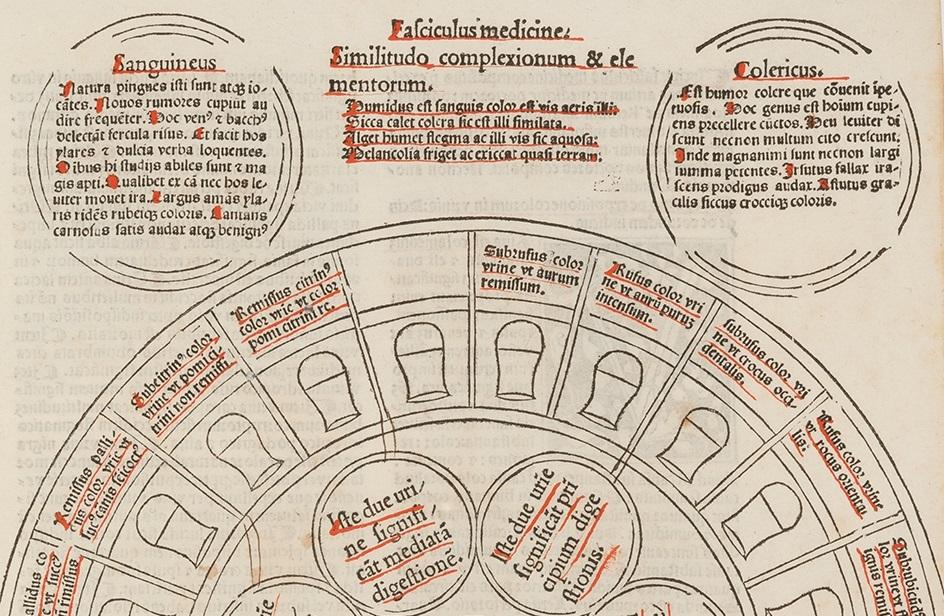The RCP library contains many important early medical books. Some are magnificent and spectacular tomes, lavishly illustrated or inches think. Others, however, are much humbler.
The Regimen contra pestilentiam certainly falls into the latter category. It’s a small book – only 12 pages long and about the size of a sheet of A5 paper – published in several editions in the late 15th century. Inside are five sections of practical advice about plague: causes, symptoms, remedies, means of giving comfort, and bloodletting. It was clearly a popular work; printshops in France, Germany, London, Antwerp and Lisbon produced at least 33 versions in the years before 1500.
The text of the Regimen contra pestilentiam attributes authorship to Swedish bishop Bengt Knutsson (d.1462) but it was probably written by Joannes Jacobi (d.1384), physician to the popes in Avignon. The author recommends many different precautions against infection, including cleaning and protecting houses by closing windows against the infectious south wind, fumigating rooms with herbs like bay or hyssop, and keeping a wood fire burning to clarify the air. Individuals are also advised to protect themselves by confessing their sins, washing their face and hands regularly with rose water or vinegar, avoiding bad smells such as dead bodies and stagnant water, and avoiding crowds of people.
The book shows evidence of use in the 16th century. In the section on bloodletting a reader has added the English explanation ‘a giddynes [giddiness] of the head’ next to the Latin word ‘vertiginem’. The text here recommends that a recently-infected patient should be bled immediately until they feel dizzy or faint.

A 16th-century reader, possibly the same person, has also copied a ‘singular receyte [recipe] for to kill wormes’ onto the title page:
Take the gall of a bull or ox newly killed and stamp it in a handful of cumin. Make a plaster of it and lay it over all the belly. Remove the same every 6 hours.
This recipe appears in, and was probably copied from, The booke of children, a short compendium of remedies often published with Jean Goeurot’s popular medical book Regiment of life and other treatises on plague and infection during the 1500s. Another recipe in English – including eggs and walnuts as ingredients – has been added to the foot of a page later in the book.

The Regimen contra pestilentiam was one of 3,000 books bequeathed to the library by obstetrician and gynaecologist David Lloyd Roberts (1835–1920). See it on display on 19 May, alongside a recent acquisition on a much grander scale: the Fasciculus medicinae, a medical compendium illustrated with 10 full-page woodcuts and published in 1500, purchased in September 2013 with generous support from the Arts Council.
Katie Birkwood
Rare books and special collections librarian
Read more about the RCP's library, archive, and museum on our blog, and follow @RCPmuseum on Twitter.
